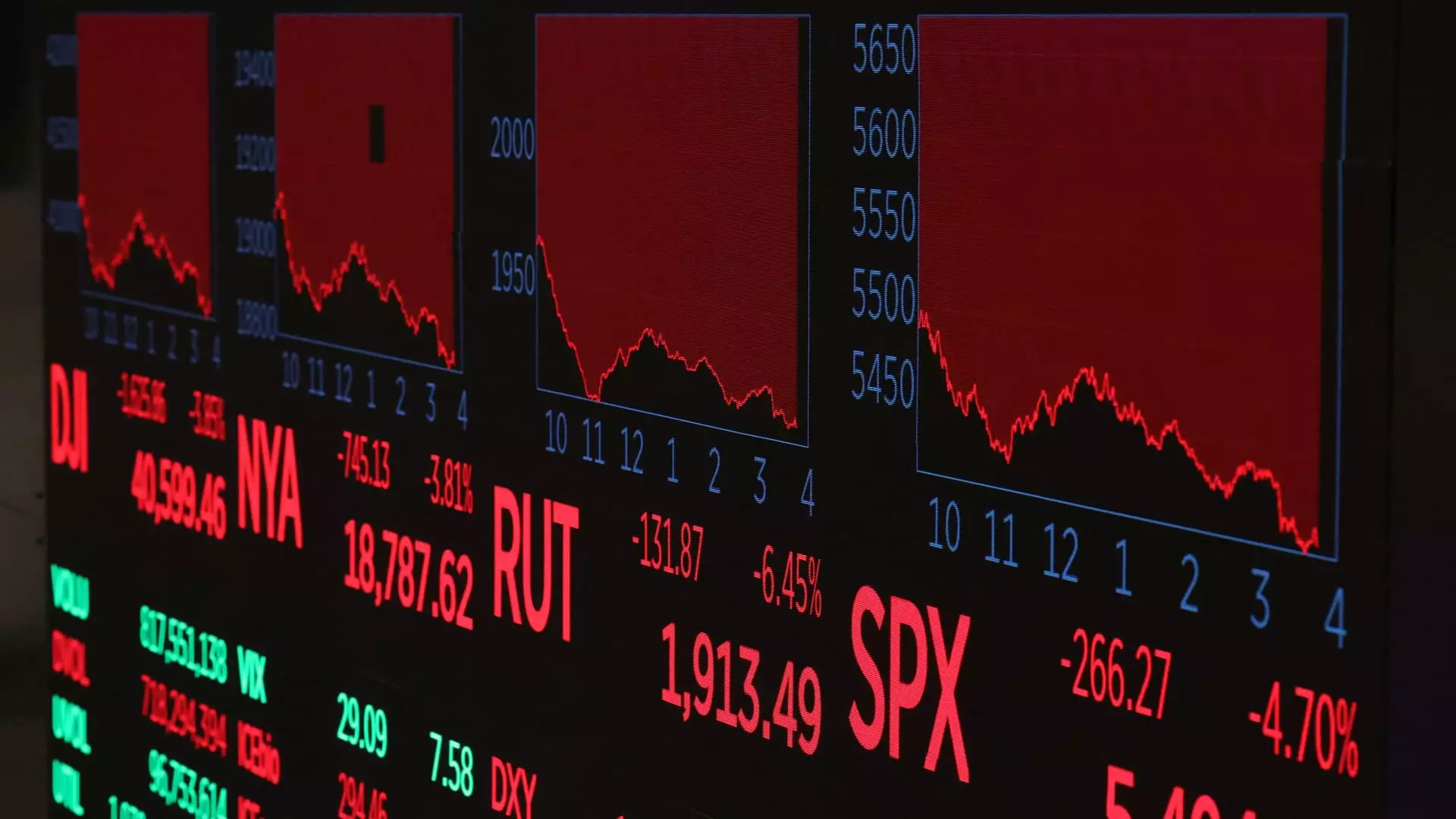In a time when market fluctuations can evoke panic, it’s both refreshing and a tad shocking to observe how everyday investors are stepping up with courage. Recently, amid the swirling uncertainties of Donald Trump’s ever-evolving tariff regulations, a new wave of retail investors has emerged, undeterred by the bearish landscape. For them, this isn’t merely a matter of speculation—it’s an opportunity. Rachel Hazit, a 32-year-old marketer from Philadelphia, demonstrates this boldness, steering clear of the mainstream anxiety circulating within Wall Street. Instead of recoiling, she visualized the market dip as a “sale.” This adventurous mindset resonates with many novice investors who are keen to navigate the tumultuous waters of the stock market.
Buying the Dip: A Shaky Strategy?
The prevalent philosophy of “buying the dip” has gained traction among new retail investors, transforming panicked downturns into golden opportunities. However, is this strategy just a fleeting trend, or is it indicative of a cultural shift towards retail investment? Data from Vanda Research highlights the audacious commitment of everyday investors—suggesting a remarkable $8.8 billion influx into U.S. equities amid a market downturn. Wallets are opening, but there’s a prevailing risk associated with this enthusiastic entry. Panic and excitement can often go hand in hand, and one must consider whether the “buy-low” philosophy breeds wisdom or recklessness. The truth is, this sentiment plays right into the hands of seasoned institutional investors who may relish the chaos.
When Optimism Meets Reality
Despite the upbeat atmosphere exhibited by retail investors, the emotional undercurrents are anything but rosy. Individuals like Hazit reflect a broader tension; there’s optimism in their purchases, yet unease about the economic outlook remains palpable. Her concerns over potential inflation caused by tariffs and subsequent consumer spending power make it clear that enthusiasm is often accompanied by apprehension. It begs the question: How long can this duality sustain itself? As much as we want to champion the indomitable spirit of retail investors, the realities of global economics cannot be overlooked. The day-to-day decision to invest is layered with the potential for economic consequences that can resonate deeply within their financial lives.
The Institutional Retreat: A Stark Contrast
Against the backdrop of retail exuberance, institutional investors appear to be retreating to safer ground. Following Trump’s tariff announcement, a flurry of strategy downgrades hit Wall Street, painting a dire picture of the S&P 500’s fate. With a looming bear market off the table for retail traders, are we witnessing a rare case of the average Joe outpacing institutional wisdom? The contrast paints a fascinating narrative; while mom-and-pop investors are plunging funds into equities, professional strategists scurry to revise their predictions. It instills a sense of rebellious pride amongst retail investors, but one has to ponder whether they are navigating unsteady waters with the right tools.
The Role of Social Influencers
In an era where social media can shape trends, influencers play a pivotal role in driving retail investment. Financial educators encourage their followers to see downturns as opportunities rather than roadblocks to wealth creation. Tori Dunlap, with her focus on empowering underrepresented groups to build financial independence, reinforces the belief that “millionaires are made during market downturns.” However, despite the empowering rhetoric, the question persists: Does this advocacy serve to commend individual investors, or is it nudging them towards perilous decisions? Emotional investment can often cloud judgment, especially when one is swayed by viral sentiments or online success stories.
Long-term vs. Short-term Vision
Namaan Mian, a 33-year-old with several years of investment experience, articulates the importance of a long-term vision. For him, daily fluctuations are but a blip on the radar, and extended market hold translates to greater returns down the line. His perspective prompts a crucial discussion: should new retail investors adopt a similar approach, or is there merit in immediate engagement during market lows? The balancing act between capitalizing on short-term market movements while committing to long-term strategies can be elusive, particularly for those still finding their footing in the financial arena.
The Outlook: Cautiously Optimistic or Folly?
While optimism runs high among retail investors, the broader implications of their choices stir prevalent concerns. Yes, the influx of capital into the stock market demonstrates a resilience among the average investor, yet the impending specters of inflation and recession looms large. It creates an intoxicating blend of awareness and naivety, as the economic climate shifts beneath their feet. As they dive into their newfound roles as market players, it’s essential to temper their excitement with a grounding in reality—not every dip is a buying opportunity, and discerning the true value of assets amidst chaos is a skill akin to art.

